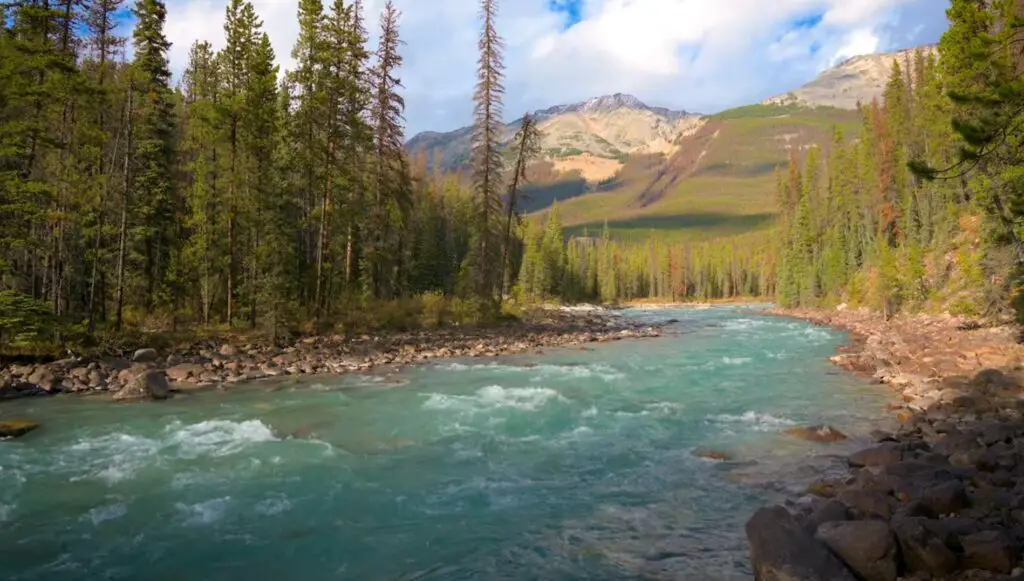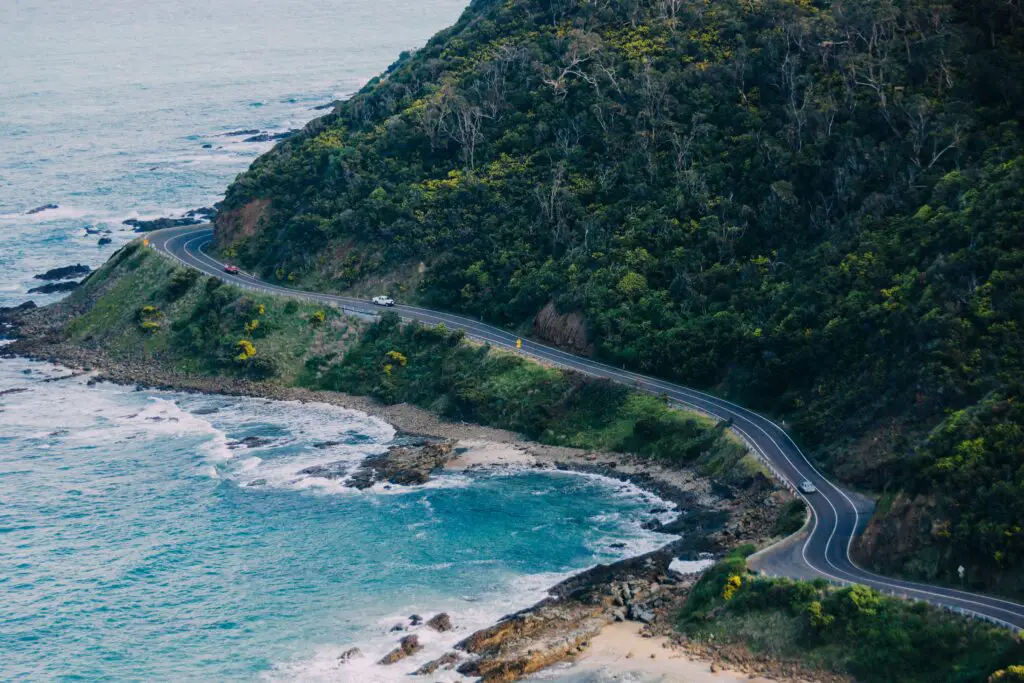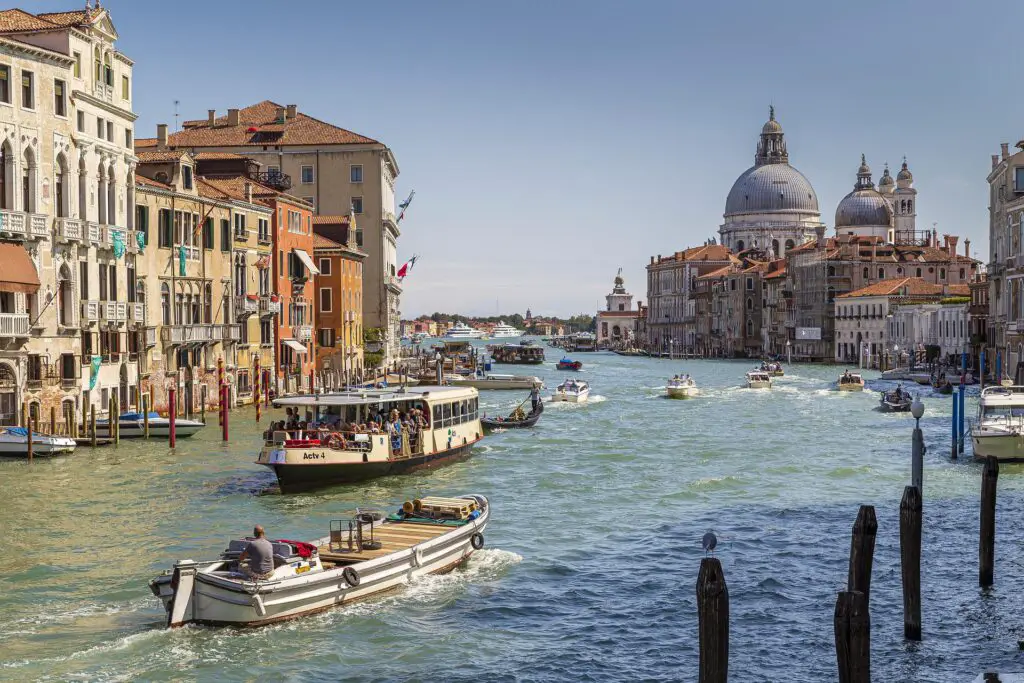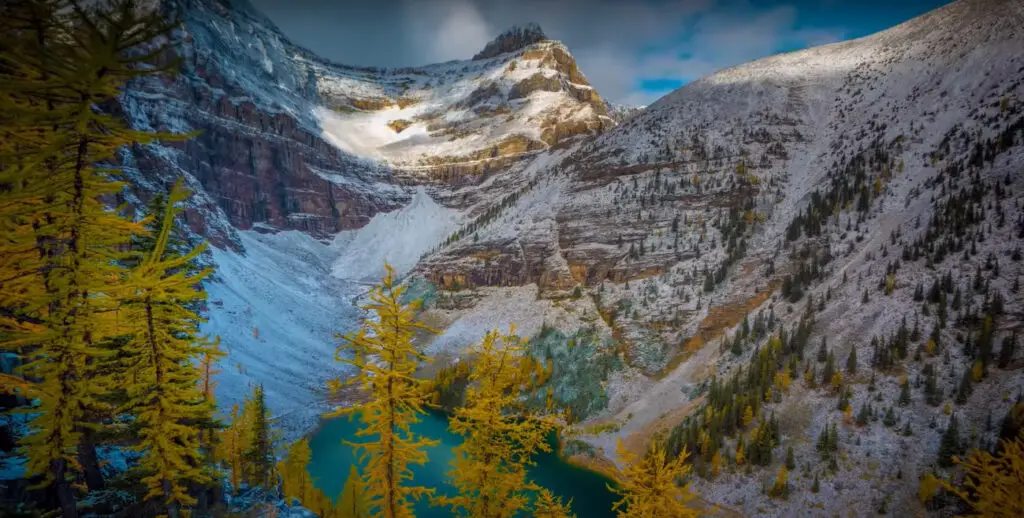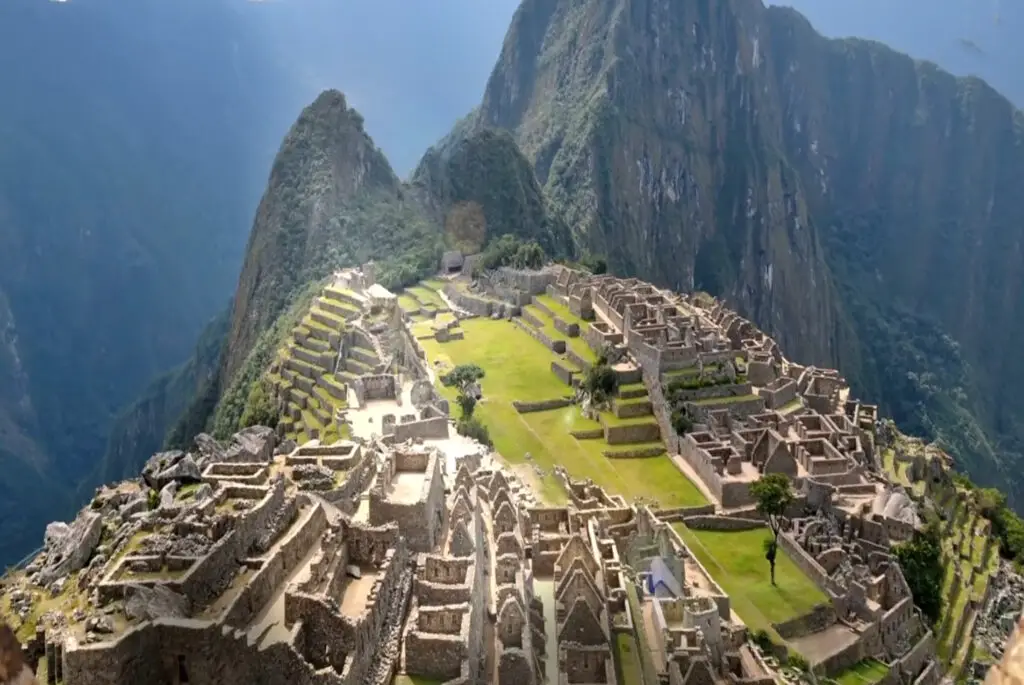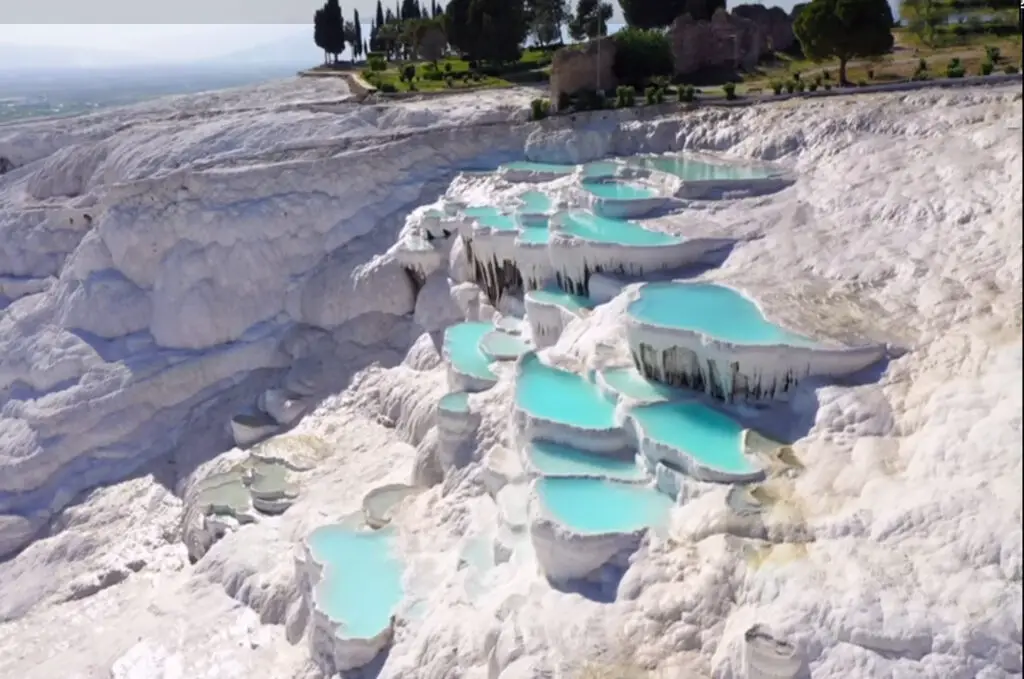Nestled in the heart of the Canadian Rockies, Jasper National Park stands as a testament to the breathtaking beauty and pristine wilderness that Canada has to offer. Established in 1907, this vast national park spans over 11,000 square kilometers, making it the largest national park in the Canadian Rockies. With its stunning landscapes, diverse wildlife, and abundance of outdoor activities, Jasper National Park has become a paradise for nature lovers, adventurers, and those seeking a true wilderness experience. In this article, we delve into the wonders of Jasper National Park, uncovering its natural treasures and highlighting the incredible experiences that await visitors.
Jasper’s Natural Splendor:
Jasper National Park is renowned for its spectacular scenery, boasting snow-capped mountains, pristine lakes, ancient glaciers, and dense forests. The park is home to iconic landmarks such as Mount Edith Cavell, Athabasca Falls, and Maligne Lake, each offering awe-inspiring vistas that leave visitors in awe. The mesmerizing beauty of the park provides endless opportunities for photography, sightseeing, and immersing oneself in the tranquility of nature.
Flora and Fauna:
The park’s diverse ecosystems support a rich variety of flora and fauna. From lush alpine meadows adorned with wildflowers to towering spruce and pine forests, Jasper National Park is a haven for plant life. Wildlife enthusiasts will be thrilled by the chance to spot iconic Canadian animals, including grizzly bears, black bears, elk, moose, wolves, and mountain goats. The park’s pristine environment provides a sanctuary for these magnificent creatures, offering visitors a chance to observe them in their natural habitat.
Outdoor Adventures:
Jasper National Park offers an array of outdoor activities for adventure seekers. Hiking enthusiasts can explore an extensive network of trails that cater to all skill levels, from leisurely strolls to challenging backcountry treks. The park also provides opportunities for mountaineering, rock climbing, fishing, kayaking, and canoeing in its lakes and rivers. Wildlife safaris, guided tours, and scenic drives are popular ways to explore the park’s vast expanses, allowing visitors to discover its hidden gems.
Conservation and Sustainability:
Preserving the natural integrity of Jasper National Park is of utmost importance. The park authorities and local communities work together to ensure sustainable practices that protect the delicate ecosystems and wildlife. Initiatives such as Leave No Trace principles, wildlife conservation programs, and responsible tourism efforts are implemented to maintain the park’s ecological balance and allow future generations to enjoy its pristine wilderness.
Special about Jasper National Park
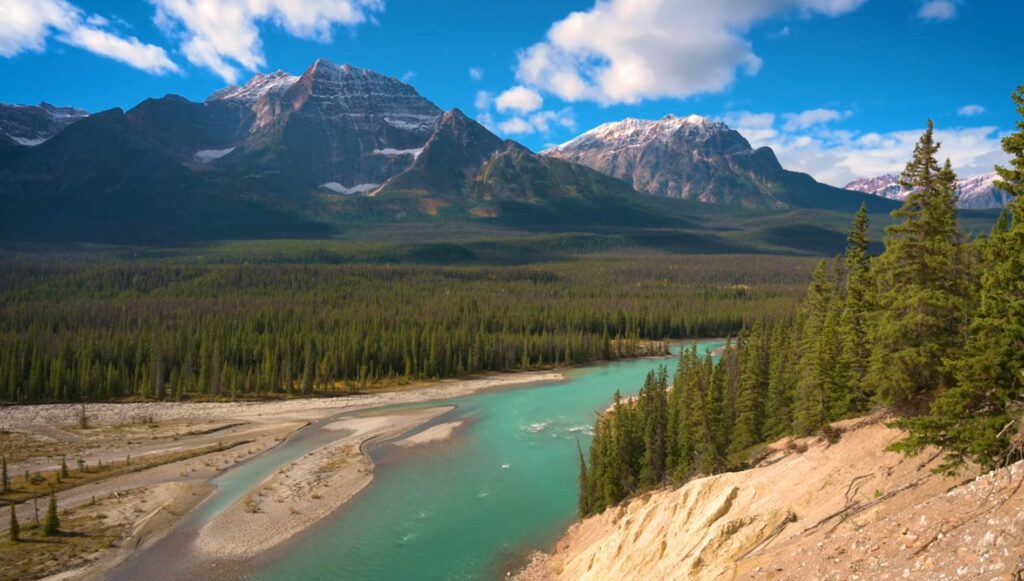
Jasper National Park is a special place for several reasons. Here are some of the key features that make it unique:
- Spectacular Scenery: Jasper National Park is known for its stunning and diverse landscapes. From soaring mountain peaks to pristine glacial lakes, deep canyons, and cascading waterfalls, the park offers awe-inspiring natural beauty at every turn. The rugged and untouched wilderness of the park provides a truly breathtaking experience.
- Wildlife and Biodiversity: The park is home to a wide range of wildlife, including iconic Canadian species such as grizzly bears, black bears, elk, moose, wolves, mountain goats, and bighorn sheep. Birdwatchers will also delight in the variety of bird species found in the park. Jasper’s rich biodiversity adds to its allure, making it a paradise for nature enthusiasts and wildlife photographers.
- Dark Sky Preserve: Jasper National Park has been designated as a Dark Sky Preserve, meaning it has exceptionally low light pollution and offers outstanding opportunities for stargazing and astronomy. The clear and dark night skies provide a chance to witness the brilliance of countless stars, constellations, and even the Northern Lights.
- Outdoor Recreation: The park offers a wide range of outdoor activities for all levels of adventurers. From hiking and camping to canoeing, kayaking, fishing, mountain biking, wildlife safaris, and guided tours, there is something for everyone. The park’s extensive trail network provides opportunities to explore its diverse landscapes and enjoy the serenity of nature
- Icefields and Glaciers: Jasper National Park is home to the Columbia Icefield, one of the largest icefields in the Rocky Mountains. Visitors can take guided tours to explore the Athabasca Glacier, walk on its icy surface, and learn about glaciology. The park’s glaciers contribute to the pristine lakes and rivers that flow through the region.
- Cultural and Historical Significance: The area has been inhabited for thousands of years by Indigenous peoples, and their rich cultural heritage can be experienced through various interpretive programs and exhibits. Jasper National Park also has historical significance, particularly in relation to the development of Canada’s national parks and the early days of mountain exploration.
- Tranquility and Solitude: With its vast size and fewer crowds compared to other national parks, Jasper offers a sense of tranquility and solitude. The peacefulness of the park allows visitors to connect with nature, relax, and rejuvenate their spirits.
Jasper National Park’s unique combination of stunning scenery, abundant wildlife, outdoor recreation opportunities, and rich cultural and historical significance make it a truly special destination for nature lovers and adventure seekers.
Things to do in Jasper National Park
Jasper National Park offers a wide range of activities and attractions to suit every visitor’s interests. Here are some popular things to do in Jasper National Park:

- Scenic Drives: Explore the park’s stunning landscapes by taking a scenic drive along the Icefields Parkway, one of the most picturesque drives in the world. Admire breathtaking mountain vistas, glacial lakes, and cascading waterfalls along the way.
- Wildlife Viewing: Keep an eye out for wildlife such as elk, moose, bighorn sheep, and black bears as you explore the park. Wildlife spotting is especially common during early morning or late evening hours.
- Hiking: Jasper National Park boasts a vast network of hiking trails catering to all skill levels. Whether you’re looking for a leisurely stroll or a challenging backcountry trek, there are options available for everyone. Some popular trails include the Valley of the Five Lakes, Maligne Canyon, and the Sulphur Skyline.
- Boat Tours: Take a boat tour on Maligne Lake, one of the most stunning lakes in the Canadian Rockies. Cruise to Spirit Island, surrounded by towering mountains and pristine wilderness, and capture breathtaking photos.
Visit Athabasca Falls: Witness the raw power of Athabasca Falls, where the Athabasca River thunders through narrow canyon walls. Take a short walk to the viewing platforms and feel the spray of the cascading water.
- Wildlife Safaris: Join a guided wildlife safari to increase your chances of spotting elusive animals in their natural habitat. Experienced guides will take you to prime viewing locations and provide fascinating insights into the park’s ecosystem.
- Visit the Columbia Icefield: Take a tour to the Columbia Icefield, located along the Icefields Parkway. Step onto the Athabasca Glacier and learn about the impressive ice formations that have shaped the region for thousands of years.
- Photography: With its stunning landscapes and abundant wildlife, Jasper National Park offers endless opportunities for photographers. Capture the beauty of the mountains, lakes, and wildlife, especially during sunrise or sunset.
- Winter Activities: In winter, Jasper National Park transforms into a winter wonderland. Enjoy activities like skiing, snowshoeing, ice climbing, and wildlife tours amidst the pristine snow-covered landscapes.
- Stargazing: Jasper National Park is a designated Dark Sky Preserve, making it an ideal destination for stargazing. On clear nights, witness a mesmerizing display of stars and constellations away from light pollution.
Remember to check the park’s official website or visitor center for the latest information, trail conditions, and permits required for specific activities. Enjoy your time in Jasper National Park and embrace the beauty of this incredible natural wonder.
Banff to Jasper National Park
The journey from Banff to Jasper National Park is a scenic and popular route known as the Icefields Parkway. Here’s what you can expect on this picturesque drive:
- Departing from Banff: Start your journey in the charming town of Banff, located in Banff National Park. Take some time to explore the town, visit Banff Avenue for shopping and dining, and enjoy the beautiful surroundings.
- Trans-Canada Highway: Leave Banff and join the Trans-Canada Highway (Highway 1) heading west. The highway will take you through beautiful mountain scenery and along the Bow River.
- Castle Junction: After approximately 30 kilometers (19 miles), you’ll reach Castle Junction, where you’ll leave Highway 1 and join Highway 93, also known as the Icefields Parkway.
- Bow Lake: As you continue north on the Icefields Parkway, you’ll pass by stunning Bow Lake. This glacial lake offers breathtaking views and is a popular spot for photography.
- Peyto Lake: Further along the Icefields Parkway, you’ll come across the turnoff for Peyto Lake. Take a short hike to the viewpoint for a magnificent aerial view of the turquoise-colored lake and surrounding mountains.
- Columbia Icefield: One of the highlights of the journey is the Columbia Icefield, a massive ice formation located between Banff and Jasper National Park. You can visit the Icefield Centre and take a guided tour onto the Athabasca Glacier.
- Athabasca Falls: Continuing north, you’ll reach Athabasca Falls, a powerful waterfall on the Athabasca River. Take a short walk to the viewing platforms to witness the raw power of the cascading water.
- Jasper National Park: After approximately 230 kilometers (143 miles) from Banff, you’ll enter Jasper National Park. The park welcomes you with its majestic mountain peaks, stunning lakes, and abundant wildlife.
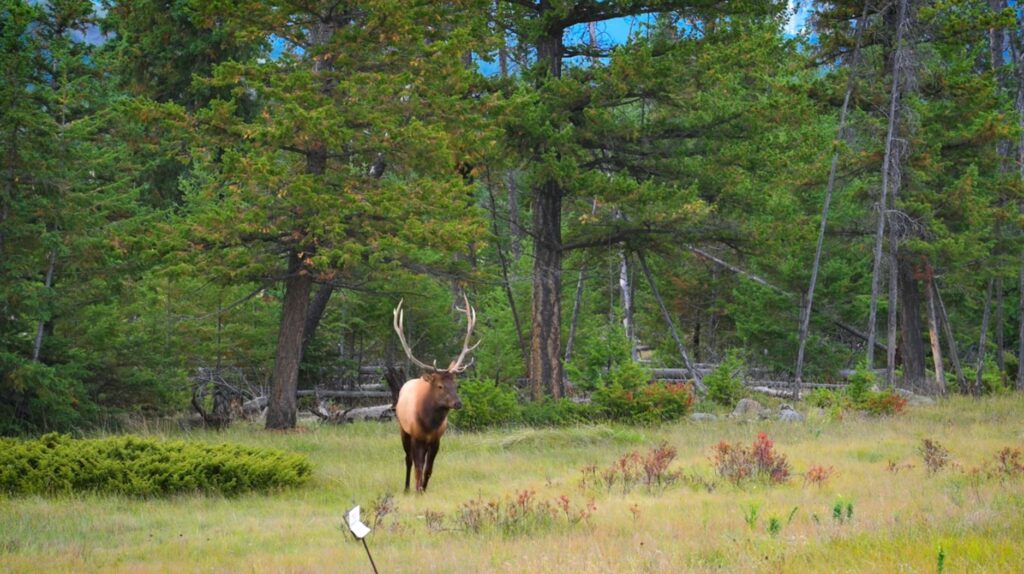
Throughout the drive, you’ll have numerous opportunities to pull over at designated viewpoints and scenic spots to admire the breathtaking landscapes, take photos, and enjoy the serenity of the surroundings. Keep an eye out for wildlife along the way, as Jasper National Park is home to a variety of animals.
The journey from Banff to Jasper National Park typically takes around 3 to 4 hours of driving time. However, it is recommended to allocate more time for stops, sightseeing, and enjoying the natural wonders along the Icefields Parkway.
Jasper National Park stands as a crown jewel within Canada’s Rocky Mountains, offering visitors an unparalleled opportunity to immerse themselves in the beauty of nature. From its majestic mountain ranges and crystal-clear lakes to its abundant wildlife and thrilling outdoor activities, the park captures the essence of untamed wilderness. Whether seeking adventure, tranquility, or simply a connection with nature, Jasper National Park delivers an unforgettable experience that will leave a lasting impression. As visitors explore this magnificent park, they are reminded of the importance of conservation and responsible stewardship, ensuring that Jasper’s natural wonders continue to inspire and captivate for generations to come.

